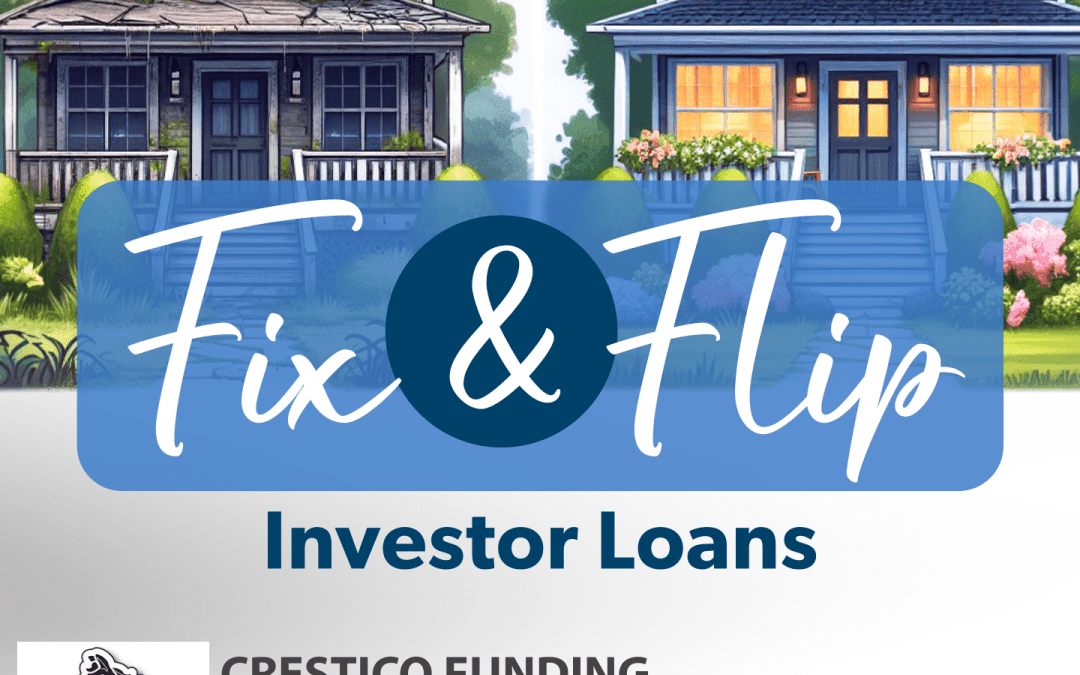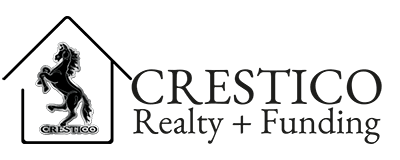
7 Innovative Mortgage Solutions Every Fix and Flip Investor Needs
The Fix and Flip market is evolving faster than ever. With rising competition, tighter timelines, and shifting property values, today’s investors need more than just cash in hand — they need smart, flexible financing that keeps them ahead of the curve. Traditional loans often fall short, leaving many flippers searching for innovative mortgage solutions that fit their unique needs and pace.
Mortgage options designed for property flippers are changing the game. Whether you’re scaling up your operations or tackling your very first project, the right financing can mean the difference between a stalled investment and a profitable exit. From hard money loans that deliver fast funding to crowdfunding Real Estate platforms that tap into collective capital, these modern solutions empower investors to move quickly and confidently in any market.
Ready to discover how these strategies can supercharge your next deal? Let’s dive into seven cutting-edge mortgage solutions every fix and flip investor should know about — so you can unlock new opportunities, manage risk, and maximize your returns.
Hard Money Loans: Fast Funding for Fast Projects
In the competitive world of property flipping, speed is often the key to securing the best deals and maximizing profits. Hard money loans stand out among innovative mortgage solutions for fix and flip investors due to their rapid approval processes and expedited funding timelines. Unlike traditional mortgages that can take weeks or even months to close, hard money lenders can often provide financing within a matter of days. This quick turnaround gives investors a crucial edge in hot markets where desirable properties are snapped up fast, allowing them to move forward with confidence when opportunity knocks.
Another compelling advantage of hard money loans is their flexible lending criteria. While conventional lenders typically scrutinize borrower credit scores and income histories, hard money lenders focus primarily on the value and potential of the property itself. This flexibility makes these loans ideal for unique or distressed properties that might not qualify for standard renovation loans or fix and flip financing. For example, an investor looking to transform an outdated duplex into modern condos might struggle to find traditional backing, but a hard money lender would be more interested in the after-repair value and market demand.
By providing both agility and adaptability, hard money loans can help fix and flip professionals maximize their return on investment (ROI). Investors can use the swift funding to quickly acquire undervalued properties, complete renovations without delay, and get the property back on the market ahead of competitors. In addition, the short-term nature of most hard money loans — typically 6 to 18 months — encourages efficient project management and faster sales cycles, enabling investors to scale their operations and reinvest profits into new ventures. Ultimately, hard money loans remain a cornerstone among innovative mortgage solutions for fix and flip projects, empowering investors to act decisively and profitably in a dynamic marketplace.
Bridge Loans: Bridging the Gap Between Purchase and Sale
In the fast-paced world of property flipping, timing is everything. Bridge loans have become an essential tool for investors looking to secure properties quickly and efficiently. These short-term loans are specifically designed to “bridge” the financial gap between purchasing a property and selling it after renovations. By providing immediate access to capital, bridge loans empower investors to move swiftly on promising opportunities — often ahead of competitors who may be held back by slower traditional financing.
One of the key advantages of bridge loans is their flexibility in covering both acquisition and rehab costs. For example, imagine an investor spots a distressed home with high upside potential at a foreclosure auction. With a bridge loan, they can secure the property right away, then use remaining funds to start renovations immediately. This seamless access to capital not only expedites the purchase but also keeps the project on track, reducing holding costs and increasing overall profitability.
Private lending for investors often forms the backbone of bridge loan financing. Unlike conventional banks, private lenders can assess deals on a case-by-case basis, prioritizing the value of the property and the investor’s strategy rather than rigid credit requirements. This personalized approach streamlines approval processes and enables more creative deal structures — ideal for unique or unconventional fix and flip projects that might not fit traditional lending criteria.
Ultimately, bridge loans are invaluable for investors who need to act fast and keep their projects moving forward without delays. By smoothing the transition from acquisition through renovation to resale, these loans help flippers maximize market opportunities, maintain momentum, and achieve greater returns on investment. For both seasoned professionals and newcomers, leveraging bridge loans — and building strong relationships with private lenders — can make all the difference in today’s competitive real estate landscape.
Crowdfunding Platforms: Harnessing Collective Capital
In recent years, crowdfunding platforms have revolutionized the way fix and flip investors secure financing, providing an innovative mortgage solution that taps into the collective power of multiple contributors. By pooling resources from a broad network of investors, these platforms make it possible for individuals and small teams to access significant capital — often rivaling traditional short-term real estate loans in terms of speed and flexibility. This approach not only democratizes funding but also enables investors to participate in projects that might have been out of reach with conventional lending.
One of the standout benefits of crowdfunding is the lower barrier to entry. For new or small-scale property flippers who may not have a long track record or substantial assets, crowdfunding offers a viable alternative to traditional investment property loans. Many platforms allow investors to contribute modest amounts, sometimes as low as a few thousand dollars, making it easier for first-timers to get their feet wet in the real estate market. This flexibility opens doors for aspiring entrepreneurs who want to build experience and credibility without taking on overwhelming financial risk.
Beyond access to capital, crowdfunding platforms foster expanded networking and partnership opportunities. Participating in these ecosystems connects investors with like-minded professionals, experienced mentors, and even potential buyers or contractors. For example, a fix and flip investor might find a partner with Construction expertise or gain insights from others who have navigated similar renovation challenges. These relationships can be invaluable for both project success and long-term business growth, turning each investment into a collaborative learning experience.
As crowdfunding continues to mature within the landscape of innovative mortgage solutions for fix and flip ventures, investors are discovering new ways to diversify their funding sources while expanding their professional networks. Whether you’re looking for your first project or scaling up your investment portfolio, leveraging crowdfunding can be a strategic move — helping you compete in fast-paced markets where agility and access to capital make all the difference.
Renovation Loans: Financing Upgrades and Repairs
One of the most significant challenges for fix and flip investors is securing enough capital to cover both the property purchase and the necessary renovations. This is where renovation loans come in, offering flexible mortgage options that bundle these costs into a single loan package. For example, products like the FHA 203(k) loan and Fannie Mae HomeStyle Renovation loan allow investors to finance not just the acquisition but also the repair and improvement expenses. This dual-purpose approach simplifies the financing process, ensuring you’re not scrambling for separate funding sources as your project progresses.
The FHA 203(k) loan is particularly popular among newer investors because it’s government-backed and often more accessible for those with modest credit or lower down payments. Meanwhile, the HomeStyle Renovation loan offers even greater flexibility, allowing for a wide range of upgrades, from structural repairs to luxury enhancements like swimming pools or energy-efficient features. By consolidating costs, these loans make budgeting more predictable and cash flow management more straightforward — two critical factors for maximizing ROI fix and flip projects.
Consider a real-world scenario: an investor purchases a distressed property at a bargain price but knows it needs extensive kitchen and bathroom upgrades before it’s market-ready. With a renovation loan, both the purchase price and renovation budget are rolled into one closing, streamlining the draw process for contractors and vendors. This setup not only speeds up project timelines but also helps investors act quickly on opportunities without worrying about sourcing additional capital mid-project.
Ultimately, renovation loans empower fix and flip professionals to take on more ambitious projects with confidence. By leveraging these specialized mortgage solutions, you can focus less on piecing together funding and more on executing high-impact renovations that elevate property value — laying the groundwork for a successful sale and a stronger return on investment.
Line of Credit Solutions: Flexible Access to Capital
For fix and flip investors seeking agility in a fast-moving market, line of credit solutions stand out as a game-changer among innovative mortgage solutions for fix and flip projects. Unlike traditional loans that provide a lump sum upfront, a revolving line of credit allows you to draw funds as needed, making it an incredibly versatile real estate investing tool. This flexibility is especially valuable for ongoing renovation projects where expenses can be unpredictable — whether it’s discovering hidden plumbing issues or deciding to upgrade finishes to boost resale value.
One of the primary advantages of using a line of credit is the ability to respond swiftly to new investment opportunities or unforeseen costs. For example, if you’re midway through a kitchen remodel and encounter structural issues, having immediate access to capital means work doesn’t have to pause while you secure additional funding. Similarly, if a neighboring property suddenly hits the market at a bargain price, your line of credit can empower you to act quickly and secure the deal before competitors even have a chance to mobilize.
Another benefit is the way lines of credit streamline renovations and overall cash flow management. Because you only pay interest on the amount you actually use, this solution helps maintain liquidity and ensures you’re not overextending your finances. It also reduces the administrative burden — no need for repeated loan applications every time a new project or expense arises. Instead, your focus stays on maximizing ROI and keeping your projects on schedule.
Incorporating line of credit solutions into your financing toolkit can be a powerful way to support growth and adaptability in your fix and flip business. By giving yourself flexible access to capital, you can confidently take on multiple projects, manage surprises with ease, and leverage one of the most effective real estate investing tools available today. For many investors, this approach is key to staying competitive and successful in the ever-evolving world of property flipping.
Portfolio Loans: Streamlining Multiple Investments
For seasoned fix and flip investors managing multiple properties, juggling several individual mortgages can quickly become a logistical nightmare. Portfolio loans offer a streamlined solution by allowing you to bundle all your investment properties under one mortgage umbrella. Instead of tracking separate payments, Interest Rates, and loan terms for each property, investors benefit from a single payment structure, making cash flow management significantly more straightforward. This not only reduces administrative headaches but also provides a clearer snapshot of your overall financial position.
One of the most appealing aspects of portfolio loans is their flexibility. Traditional lenders often impose strict guidelines on the number of properties an investor can finance, but portfolio loans are specifically tailored for those looking to scale. Whether you own five single-family homes or a mix of multifamily units and commercial spaces, a portfolio loan can accommodate your diverse holdings. For example, an investor who’s accumulated several rental properties over time might use a portfolio loan to refinance existing mortgages, freeing up equity to reinvest in new fix and flip opportunities.
Beyond simplifying payments, portfolio loans can be powerful growth tools. By consolidating debt, investors often gain better negotiating power for favorable interest rates or longer repayment periods. Lenders who specialize in portfolio loans understand the unique needs of real estate entrepreneurs and are generally more willing to assess the strength of your entire investment strategy rather than just individual property performance. This holistic approach supports long-term scaling and reduces the friction that can come with expanding your real estate portfolio.
Ultimately, portfolio loans help investors focus on what matters most — finding great deals and executing successful renovations — rather than getting bogged down in paperwork. As your property empire grows, having a consolidated financing structure can make it easier to leverage your assets for future investments, seize time-sensitive opportunities, and maintain healthy cash flow across all your projects. For investors serious about scaling up their fix and flip operations, portfolio loans are an indispensable tool in the modern financing toolkit.
Joint Venture Financing: Partnering for Bigger Opportunities
For fix and flip investors looking to scale up or tackle more ambitious projects, joint venture financing opens the door to possibilities that might otherwise be out of reach. By partnering with other investors — whether they’re fellow flippers, private equity groups, or even local contractors — you can pool both capital and expertise to pursue larger deals. This approach not only increases your purchasing power, but also allows you to compete for properties in hot markets where single investors might struggle to secure funding alone.
One of the most attractive aspects of joint venture financing is the ability to share both risk and reward. For example, if you’re experienced in renovations but lack sufficient funds, you might partner with a capital investor who brings financial resources to the table while you manage the project. Conversely, if you have access to cash but are new to construction management, teaming up with a seasoned contractor can help ensure the project runs smoothly and profitably. By distributing responsibilities according to each partner’s strengths, you increase the odds of a successful outcome and reduce the likelihood of costly mistakes.
Joint ventures also encourage innovative mortgage solutions for fix and flip deals through creative structuring. Profit sharing arrangements can be tailored to suit each partnership — some investors may prefer an equity split based on their contributions, while others might opt for fixed returns or tiered incentives as certain project milestones are met. These flexible options make joint ventures especially appealing for investors seeking custom solutions beyond traditional financing. For instance, a group might agree on a 70/30 profit split, where one partner provides funding and the other manages the rehab and sale, aligning everyone’s interests toward maximizing property value.
Ultimately, joint venture financing isn’t just about accessing more capital — it’s about building a powerful network of collaborators who bring diverse skills and perspectives to the table. As the fix and flip market evolves, forming strategic partnerships can help investors stay agile, seize bigger opportunities, and weather market fluctuations together. By leveraging these innovative mortgage solutions for fix and flip ventures, you position yourself for greater long-term growth and success in an increasingly competitive landscape.
Choosing the Right Solution for Your Fix and Flip Strategy
Selecting the best financing is just as important as choosing the right property. Every project is different, so take time to assess your unique needs, budget, and risk tolerance. Whether you’re looking for fast funding, flexible terms, or creative partnerships, innovative mortgage solutions for fix and flip investors can help you reach your goals.
Match your financing strategy to your investment plan. Explore options like hard money loans, renovation loans, or joint venture financing to find the best fit. Don’t hesitate to try new solutions or combine multiple approaches for maximum flexibility. By staying informed and open to diverse mortgage products, you can set yourself up for long-term success in the ever-evolving fix and flip market.

